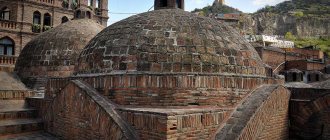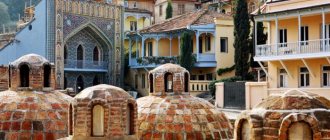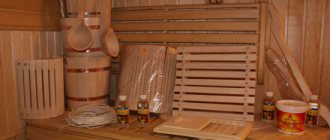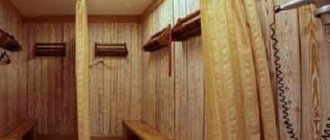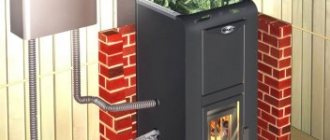One of the most sought after sights of Tbilisi are sulfur baths, which have no analogues anywhere in the world. They involve thermal springs created by nature itself. The poet Joseph Grishashvili said that being in Tbilisi and not going to the sulfur baths is like going to Paris and not seeing the Eiffel Tower. This phrase has become a catchphrase.
They are similar to simple public ones with the difference that the water is supplied from sulfur springs located underground. It is already warm and has a peculiar smell of hydrogen sulfide. When going on vacation to Georgia, it would not be superfluous to worry about treatment issues: here these concepts are easily compatible and complementary.
Their architecture deserves special consideration: they are made in the form of large semi-basements under stone domes. In former times, constant twilight reigned in them, slightly diluted by slanting sunlight from the window. Now everything is lit by electricity.
How did the baths appear?
According to legend, the foundation of Tbilisi itself is connected with sulfur springs. The name of the city goes back to the Georgian “tbili” (the ancient sound is “tfili”), which means “warm”.
The initial discovery of the springs is associated with the hunt of King Vakhtang Gorgasali near the Tsavkisistskhali River (2nd half of the 5th century).
Today this river crosses the Botanical Garden and continues its path under Aliyev Square.
The story goes that the king shot a pheasant, and it fell into a spring. What happened next, opinions differ. One version says that the pheasant’s wound healed, another says that it was simply boiled. The versions agree on one thing: the king was so impressed that he wanted to move the capital to this place. So Mtskheta remained only a spiritual center, and all state affairs moved to Tbilisi. Historians date the oldest discovered baths to the 1st-2nd centuries. Already at that time, a ceramic pipeline was installed that filled deep fonts carved into the rock, lined with locker rooms along the edges. The covered buildings were first erected in the 16th century and were lavishly decorated with mosaics, imitating the Persian fashion of the time. Time has not always been kind to them: more than once the baths have been destroyed, rebuilt, and modified.
Once upon a time, they were the center of all public affairs of the city: in addition to washing and relaxing here, people learned the latest news, shared information, negotiated and made new acquaintances.
Benefits and harms
Many people think that this is simply about harmless entertainment or a kind of relaxing procedure. However, this is not quite true. The water temperature is very high: at the outlet of the spring it is above 40 °C, and it also has a very rich chemical composition. The hydrogen sulfide admixture can reach up to 150 mg/l and practically never falls below 50 mg/l.
In fact, this is a serious medical procedure used for:
- getting rid of skin problems;
- cleansing the body of toxins;
- vascular stimulation;
- improving blood circulation;
- healing of joints and cartilage tissue.
And this is not a complete range of problems that can be solved here. The state of the nervous system, strengthening the immune system, giving vigor and energy - all these points can be influenced by this method.
However, as with any drug, overdosing can be dangerous. You can stay inside without a break for more than 15 minutes. After this, be sure to take at least a 5-minute break. Do not make more than 4 visits during the day.
Those who suffer from cardiovascular diseases should be even more careful. Exceeding the recommended time may result in overheating. The procedure cannot be performed for asthma, liver and kidney problems, stomach ulcers, tuberculosis and cancer.
General information
The sulfur baths of Tbilisi are concentrated in the Abanotubani district, not far from the Juma Mosque and the Narikala fortress, along Abano and Joseph Grishashvili streets. Most of them are located under stone domes in underground rooms; there are also free-standing buildings. Inside there are general sections (separately for men and women) with swimming pools, showers, relaxation rooms, or separate rooms with their own swimming pools. Some baths have both shared and private rooms, while others have either/or. The water in the pools comes from sulfur sources, the temperature is from +37 °C.
It is recommended to immerse yourself in sulfurous water for a maximum of 4 times for 10 minutes (more is harmful). Indications: healing the skin, respiratory tract, relaxation, strengthening the immune system. Contraindications - diseases of the liver, kidneys, biliary and urinary systems, asthma, tuberculosis, heart failure, angina pectoris, ischemia, cerebral atherosclerosis, epilepsy, varicose veins, oncology, etc.
Rooms and their prices
At different times, up to 60 sulfur baths could function simultaneously in Tbilisi. About 10 complexes, built mainly from the 17th century, have survived to this day. to the 19th century
The best examples are located in the Abanotubani area . This place itself envelops you with a special atmosphere and pleases with its unique landscape. Since the structures themselves are hidden underground, only brick domed roofs topped with small turrets go outside.
Orbelianovskaya (Motley)
Located at: st. Abano, 2.
Information can be obtained by phone. +995-322-93-00-93, and also on the website: www.chreli-abano.ge. Room prices range from 50–150 GEL, there are a couple of VIP rooms (300 and 500 GEL).
Local residents consider this bath to be the best. It is also called “variegated” or “blue”. In Abanotubani it is noticeably different from the others both outside and inside. Only it resembles an Arabic-style building, beautifully decorated with mosaics in shades of blue. Initially, the baths belonged to the sphere of influence of the Azerbaijanis, which explains this unique design.
The entrance is crowned with a plaque with carved words of the great Russian poet A.S. Pushkin. Having visited the local baths, he left the following impressions: “I have never seen anything more luxurious than the Tiflis baths.” Alexandre Dumas also visited here once, so two personal rooms remained named in honor of these famous persons.
The service here is truly superior to the rest. The arrangement of premises, the level of personnel, and all other characteristics do not lag behind. For a comfortable stay in a pleasant environment, you should definitely choose this one out of all the baths. However, there is also a minus: a high fee for visiting - 1 hour of renting a hall will cost about 120 GEL (about 47 US dollars). To save a little, it’s better to go with a group, then the rental cost will be shared by everyone and won’t look so intimidating.
The decoration of the rooms focuses on beautiful oriental motifs. A special room with hermetically sealed insulation is allocated for the locker room. This allows you to keep things dry, despite the high humidity in the rest of the room. Other baths are more modestly equipped. There is also a spacious hallway, equipped with a comfortable seating area, so that you have somewhere to go during the necessary breaks.
Rubber slippers are not provided, but disposable ones are offered for sale for 2.5 lari ($1). Remember that their soles are slippery and walking in them on wet surfaces is inconvenient and sometimes dangerous, so try to bring your own slates with you. In addition, you can find towels and sheets at the administrator, as well as purchase soap (for the same price as slippers).
The air inside is extremely warm, rarely does anyone manage to stay for a long time - you want to hurry out of the heat into fresher air. The water is so hot that it is difficult to sit in it even for 15 minutes. However, it is easier to enter than “Gulo”, perhaps due to the fact that in Orbelianovskaya the temperature difference between water and air is not so noticeable.
Customers are offered a rich menu of drinks and snacks that can be ordered by phone. Soft drinks cost a little more than in city stores - about 3-4 dollars. Before the end of the paid time, employees call to remind you how many minutes are left.
Short story
Legend says that once upon a time the founder, King Vakhtang Gorgasali (founder of Tbilisi), hunted in these lands along with his falcon.
They hit a pheasant, which fell down like a stone. When the nobleman found the carcass, he discovered that it had been boiled in a thermal spring, and a falcon was sitting on top of it. The king liked the place so much that he ordered the construction of baths on this site .
It is not known how true this story is, but one thing is certain - hot hydrogen sulfide springs were one of the main reasons for choosing the site for the construction of Tbilisi. This is evidenced by the name of the city, which comes from the word “tbili” (warm).
The first baths appeared here in the 1st-2nd centuries, and the current complexes were built in the period from the 17th to the 19th centuries. A separate layer of urban culture formed around them. As in ancient Rome and the countries of the East, they served not only for washing and healing, but also as original clubs. They gathered there to exchange news, feast, make deals and just relax.
Gulo
Located at: Grishashvili st., 5.
Information can be found by phone: +995-032-272-05-94, +995-577-588-122, +995-599-588-122, as well as on the website: www.thermal.ge and Facebook page ": www.facebook.com/tbilisithermalspa. A visit will cost 30–200 GEL, the most popular rooms cost 70-80.
The entrance door is located a little to the side, not immediately visible, so there are fewer visitors here, which means it is better to head here during the tourist season. Among the celebrities, singer Sting was here when he performed in Georgia. If you check with the staff which number was provided to them, you can ask them to send you to it.
It’s probably unlikely that Sting would be offered this option today. But then the Orbelianovskaya bathhouse was undergoing renovation, and the list of the best was topped by “Gulo”. Important factors must also have been the excellent location, easy access to the building and relative privacy.
The price tag here is significantly more loyal than that of Orbelianovskaya, and in order to be able to adequately compare these options, we will consider the most expensive and comfortable Gulo offices. For example, a hall with two pools: hot and cold - will cost 70 lari ($26).
Possessing sufficient space, it is decorated very modestly; the only impressive thing is the mosaic panel on the wall.
The locker room here is combined with the hall, so groups of friends of different sexes have to agree on the order. Only the toilet is a separate room, but you need to go to it at the farthest end, closer to the pools, and for this you will need to wear street shoes.
During the cold season, it can be cool inside. Even at subzero temperatures, cold air from the street can penetrate here, making the water seem unbearably hot. Entering the pool in such conditions can be difficult and not the most pleasant sensation. However, it will be easier when you enter again.
But diving for the recommended 15 minutes is much easier than with more respectable neighbors. And how nice it is to go from hot water to refreshing cold water located next door. In the hot season, plunging into hot hydrogen sulfide liquid is much easier, and rinsing in cold liquid is simply delightful.
Everything you need for bath procedures is sold as a set: towel, sheet and shampoo. All this costs 5 lari (about 2 dollars). Rubber slippers are provided, which, however, have been used by other visitors before you.
After a swim, you can still soak up the soft sofa in the common lounge. You will have time to cool down, dry your head, drink tea or water. This is especially important in cold weather, when it is so easy to catch a cold while rushing out after water treatments.
Bathhouse No. 5
Located on Vakhtang Gorgasali Street, 3.
You can contact us by phone: +995-322-72-20-90. Facebook page.
This bathhouse is in wide demand, mostly due to its affordable price and convenience. It has a large common room (visiting it will cost only 3 GEL per person), 2 luxury rooms and 5 personal rooms equipped with swimming pools (price: 55–80 GEL). In addition to sulfur bath No. 5, the building also has a “VIP bath”, as well as a separate sauna and massage table. A massage will cost 10 lari (about 3.5 dollars), and you can try to reduce the price even more. It happens that bath attendants ask 2-3 times more, in this case, bargain or refuse - it’s not worth it.
Small rooms do not sparkle with luxury. In the common room you can feel a slight nostalgia for the Soviet era, when renovations were last done here. There is no point in going here for women: the women's section only has sulfur showers, so you won't be able to immerse yourself.
Royal Bath
Located at: st. Grishashvili 1.
Contact phone: +995-32-272-10-66. A visit will cost 70–140 GEL. Facebook page: https://www.facebook.com/samefoabano/
Tsarskaya is located immediately behind bathhouse complex No. 5, in one of the ancient buildings. The establishment does not belong to the budget category, but privacy, tranquility and silence will be pleasant bonuses.
Bathhouse "Fantasy"
“Fantasy” is located slightly above the area with all the other baths. If you walk along the street. Grishashvili and turn right in front of house number 11, then in the gateway you will see a beautiful mosaic pattern - this is the entrance.
There are no common areas here, only family rooms are available. The minimum price for them is 20 GEL, but for this money there won’t even be a swimming pool, just hydrogen sulfide showers. Therefore, it makes sense to spend a little more to get at least one container of hot water (35 GEL). More expensive rooms are also equipped with a cold pool and steam room. Before paying, ask the staff to show you the options so you can choose the one that suits you best.
Banya Mirzoeva
The only one where the women's common room is equipped with a sulfur pool (price - 5 GEL). This option is very similar to all others, except that the common rooms are a little larger in size. Located next to the Orbelian Bath and “Fantasy”, at the same address: st. Grishashvili 11 , the only difference is that this building is visible directly from the street.
Bath of King Erekle
Located at: Abano street, 2.
Contact phone: +995-322-75-21-75. It is equipped with only four separate rooms costing from 30 to 50 GEL. Each has a swimming pool.
It stands opposite the Orbelian bathhouse, but is separated from it by a bridge. The interior is quite modest and has a taste of the Soviet era. A strong argument for visiting is the affordable price: for those who are not ready to settle for a common room, but also do not want to shell out half of their cash for visiting a luxurious room, this will be the most acceptable option.
What to see in the Abanotubani area
The modern Abanotubani district is squeezed between the Sololaki ridge with the Narikala fortress and the Tabori mountain with the Tabori monastery , and its attractions begin almost immediately after the lower exit from the Botanical Garden . Firstly, this is an extremely picturesque gorge of the Tsavkisistskali river with a fairly high waterfall:
Waterfall coordinates: 41.68676, 44.80903.
In addition to the unpronounceable name Tsavkisistskhali (as it is called in its upper reaches, from the village of Tsavkisi), the river has several other names: in the middle reaches - Legvtakhevi (Fig Gorge) and Salalakistskhali (named after the area through which it flows in this section), at the mouth - Dabakhanka, from the workshops of the Dabakhchi tanners that were once located here.
One day, having overflowed its banks, the river flooded all the baths and killed many people - for this reason, in Soviet times, it was driven into a pipe. Several decades ago, it was again allowed to follow its original course, and the banks and surrounding area were reclaimed and turned into a picturesque pedestrian area.
Immediately behind the Orbeliani bathhouse, a path begins that winds along the bottom of the Fig Gorge all the way to the waterfall. The legendary Tbilisi balconies hang over the gorge:
Once upon a time, the residents of these houses came to the river bank to wash clothes, but now comfortable paths have been laid along the riverbed, very popular among Tbilisi newlyweds.
I highly recommend taking a walk through the gorge not only during the day, but also at night - the views and impressions will be no worse than during the day.
From the bottom of the canyon, you can take a spiral staircase to its top, where the unique
Juma Mosque - one of the few places in the world where Sunnis and Shiites, followers of two not very tolerant movements of Islam, pray together:
They owe their “peaceful coexistence” to the Soviet government, which destroyed the Shiite Shah Ismail mosque, which was once located near the bridge Metekhi. Previously, the Shiite and Sunni halves of the Juma Mosque were separated by a curtain, but now everyone prays together.
Juma mosque coordinates: 41.68719, 44.81019.
Near the mosque there is a small ancient quarter, in which it is very pleasant to “get lost” for a while:
On the opposite side of Abanotubani, closer to Kura and Gorgasali Street, is
the monastery of the Forty Sebastian Martyrs , named after the 40 soldiers of the Roman XII “Lightning” Legion, located in the city of Sebastia (modern name Sivas) - for their Christian religion they were left to die of hunger and cold on the ice of the lake. In Russia, their memorial day (March 9) is known as “Magpies”.
Also located on the territory of the monastery is the Tbilisi Archaeological Museum , which includes a fragment of a fortress wall from the 5th-6th centuries, the ruins of a palace, as well as a bathhouse and a wine cellar.
Monastery coordinates: 41.6889, 44.81023. Across the road from the monastery, between it and the sulfur baths, there is a pleasant small square of Heydar Aliyev , with a monument to the former president of Azerbaijan.
Visiting rules and tips
When traveling to any of these locations, keep the following points in mind.
- Choose only rooms with hydrogen sulfide pools . In economy class options there may only be a tap with special water, which, however, will not give any effect.
- In any of these places you can get a massage for no more than 15 GEL (bargaining is appropriate).
- You can purchase all the necessary hygiene products on the spot, but it is better to take with you everything you might need (soap, washcloth, slippers, towel and even a hairdryer).
- Sulfur causes silver to darken , and it is almost impossible to clean it afterwards. Also remember that the characteristic smell is absorbed deeply into the skin, and for a long time others will easily guess where you have been recently.
- When using the services of a bathhouse attendant, make sure you change the washcloth, otherwise you will simply be “washed” with a public one.
- The effectiveness of the procedure depends on the water: it is better if it is hot. The highest temperature is usually in the morning. The steam rooms here are not as hot as in Russia, only a little hotter than in the halls themselves.
- On Monday night the pools are drained and refilled. Most visitors quickly stop paying attention to the pungent smell of hydrogen sulfide. Once you've decided which seat to choose, go inside to the ticket office. After paying for the ticket, go downstairs - as a rule, the women's section is on the right side, and the men's section on the left.
- Things, even valuable ones, can be left in the locker. You will give the key to the overseer. After washing in a unique shower for the best effect of the procedure, you can go to the sulfur pool or relax in the bathroom for individual guests.
- Replenish lost moisture with aromatic tea.
Description of procedures
The algorithm for visiting any bathhouse in Tbilisi (Orbelianovskaya, Tsarskaya or No. 5) is the same. It starts with buying tickets and ends with a good mood. But before going to a particular bathhouse, it’s worth checking whether there are queues so that you don’t have to wait a long time until a place becomes free.
Tickets can be purchased at the box office. There you can also buy the little things you need for the bath: shampoo, slippers, soap.
How to get there?
There is public transport in Abanotubani, but you can take a taxi or walk. This is the center of Tbilisi: landmarks include the Gorgasali monument, Narikala fortress , Meydan and the Peace Bridge. The domes protruding above the surface of the earth, like the helmets of soldiers holed up in a trench, will not allow you to lose your way.
When traveling by public transport, take bus No. 31, 44, 50, 55, 71, 80 or 102 and get off at the Abanotubani stop. By metro these will be the stations “Liberty Square” and “Avlabari” (a little closer from it). For a taxi ride from the outskirts you will pay 10-12 GEL (about $4).
Hydrogen sulfide water
Hydrogen sulfide is formed as a result of decomposition and rotting of proteins. Dissolved in water, it penetrates through the pores of the skin, helping to balance the functioning of internal organs and human vital systems.
Hydrogen sulfide baths have been used to treat arthritis and radiculitis since time immemorial. Medical studies have shown that hydrogen sulfide water is useful in the treatment of eczema, psoriasis, neurodermatitis and other skin diseases.
When carrying out a course of treatment with hydrogen sulfide baths, consultation with a doctor is required.
The concentration of hydrogen sulfide during bathing plays a major role in the course of treatment.

